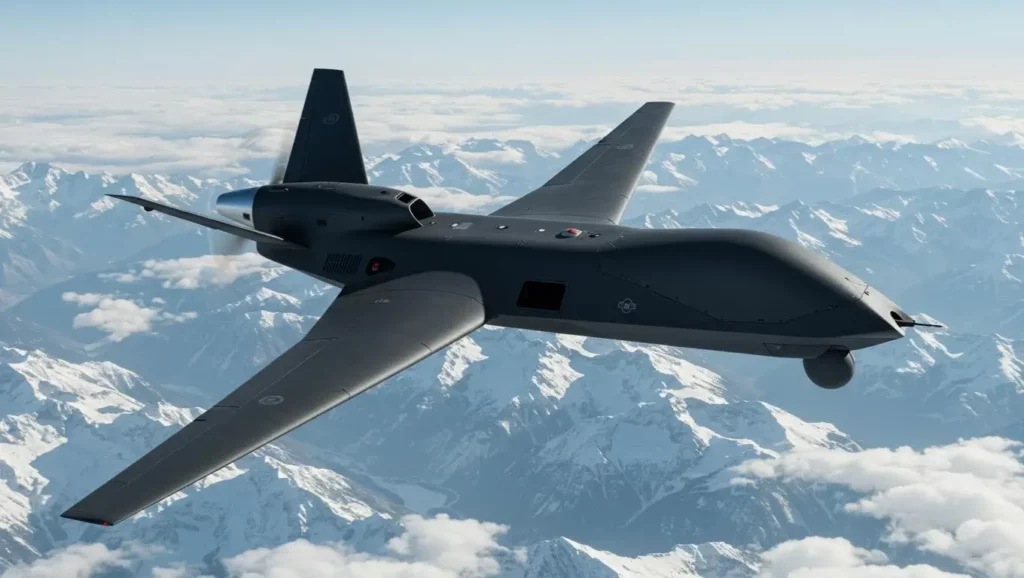The image is striking: a country at war that, far from merely enduring, is innovating to defend itself. Ukraine, under bombardment, is manufacturing its own combat drones, and some experts believe they now surpass iconic Chinese models like the DJI Mavic. The aim is clear: to gain technological autonomy while addressing the demands of the battlefield.
Ukraine designs and delivers its own military drones, freeing its army from Chinese dependence
For months, Ukrainian forces have relied on Mavic quadcopters for reconnaissance, targeting assistance, and precision strikes. However, following the ban on the sale of these drones in both Russia and Ukraine, the country has turned to local production.
Vice Prime Minister Mykhailo Fedorov confirmed to Forbes that over 1,000 Ukrainian-designed drones have already been delivered to the troops. Among these are innovative models like the Ukropter, the Yautja, and the Shmavik, a direct nod to the Chinese Mavic that they aim to surpass.
Their promise? Devices that are more robust, more autonomous, and better suited for modern electronic warfare. This represents a true industrial revolution under extreme conditions, and, importantly, a shift in technological paradigms.
Ukrainian drones withstand jamming and complete five times more missions than a Mavic

At first glance, these Ukrainian drones are bulkier and more expensive than their Chinese counterparts. However, the gamble lies elsewhere. The Zoom model, developed by Frontline Robotics, is designed to operate in areas saturated with electronic jamming.
It is equipped with a visual navigation system using artificial intelligence, capable of fulfilling its mission even without GPS or radio connection. As a last resort, it returns to its base using its visual sensors. This capability is crucial, especially on a front where Russian jammers are multiplying.
The statistics speak for themselves: 300 missions per drone, compared to an average of 60 for a Mavic. This efficiency results in a fivefold reduction in cost per mission. Such gains more than compensate for a higher purchase price.
Ukraine develops a national drone industry supported by allied technologies
Ukraine is not just making makeshift solutions. It is industrializing its production chain despite the war. Although some parts still come from China, the trend is toward greater autonomy: engines, batteries, thermal cameras, flight controllers… Everything is beginning to be designed and assembled locally.
Moreover, European partners are contributing to this effort. The company Atlas Aerospace in Latvia, for instance, offers a ground control station, the AtlasUltra, featuring a screen with a brightness of 2,000 nits. By comparison, DJI remotes peak at 700 nits. Although this detail may seem technical, it makes a significant difference in operations on a battlefield exposed to sunlight.
Some soldiers still miss the simplicity of DJI. However, gradually, Ukrainian models are gaining their trust, driven first by necessity and then by performance.
“For us, the key criterion is not the price per drone, but the cost per mission. Whereas a standard Mavic performs about 60 missions per drone, our systems achieve an average of 300. At a comparable purchase price, the cost per mission is five times lower, meaning that military units using our drones benefit from significantly better overall efficiency,” explains a spokesperson for Frontline Robotics in the pages of Forbes.
The Ukrainian drone becomes a symbol of resilience and a strategic asset for modern warfare
For Kiev, it’s not just a matter of logistics. It’s a symbolic and strategic weapon. Developing high-performing drones means regaining control over its defense capabilities. It also aims to eliminate dependency on foreign components and demonstrate that a country under pressure can still innovate.
The Shmavik and other Ukropters are not just flying gadgets. They embody the technological resilience of Ukraine. Each successful mission, every return to base despite interference, and every hour gained over the enemy proves one thing: the sky of tomorrow could very well be Ukrainian.




